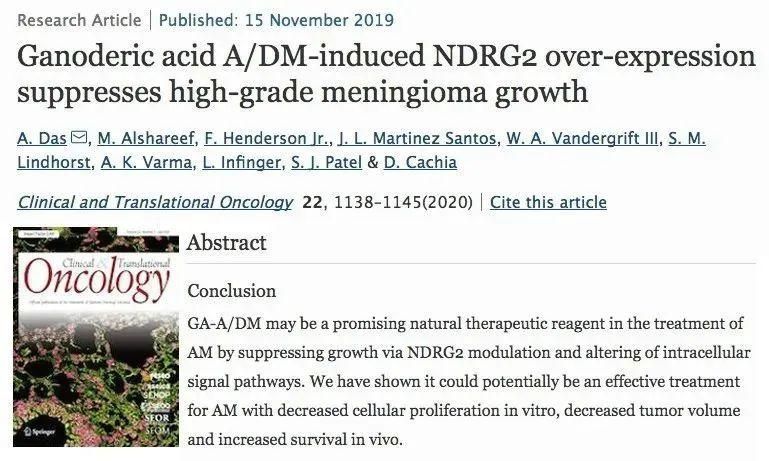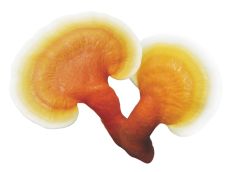
오늘, many people, when selecting 영지마 products, often ask, “What is the triterpene content of your product?” It seems that the higher the triterpene content, the better the product. However, this is not entirely correct.

현재, the method commonly used by domestic companies to measure the content of영지마 triterpenes is a chemical method. This method has issues with specificity and large errors. 그러므로, the level of triterpene content cannot accurately represent the quality of spore oil

사실은, the quality of a spore oil product is determined by various factors. High-performance liquid chromatography can accurately detect the content of “Ganoderic Acid A”. If a spore oil product can clearly indicate the content of “Ganoderic Acid A”, it provides a greater guarantee of the product’s quality. What is Ganoderic Acid A? What are its special effects? What is the difference between it and total triterpenes? 오늘, let’s get to know it.
There are more than 300 types of 영지마 triterpene compounds. Which ones are you familiar with?
첫째로, it’s important to know that영지마 triterpene compounds are not a single substance, but rather refer to substances in영지마 that have a triterpene structure. 현재까지, 이상 300 types have been discovered, distributed in영지마 fruiting bodies and영지마 포자 가루.
These triterpene compounds can be broadly divided into neutral triterpenes and acidic triterpenes. The acidic triterpenes include different types such as Ganoderic Acid A, Ganoderic Acid B, Ganoderic Acid F, 등. Regardless of whether it is Ganoderic Acid A or Ganoderic Acid B, they are both members of the triterpene family. They each have different chemical structures and, as a result, possess different physiological activities.
| Triterpene Compounds | For example |
| Neutral Triterpenes | Ganoderol A, Ganoderal A, Ganodermanondiol … |
| 산성 트리터 펜 | Ganoderic Acid A, Ganoderic Acid B, Ganoderic Acid F… |
Among the more than 300 types of triterpene compounds, Ganoderic Acid A is currently the most researched and is a triterpene compound with many discovered effects. It mainly comes from 영지버섯, and is almost non-existent in 영지버섯.
다음, let’s introduce the main effects of Ganoderic Acid A that have been widely demonstrated in pharmacological research.
The Effect of Ganoderic Acid A on Acute Liver Injury
~ 안에 2019, an article was published in the Journal of Nanjing University of Traditional Chinese Medicine. The study set up a normal group, a model group, a low-dose Ganoderic Acid A group (20mg/kg), and a high-dose Ganoderic Acid A group (40mg/kg). It studied the effects of Ganoderic Acid A on mice injected with D-Galactosamine (D-GaIN) and Lipopolysaccharides (LPS), and its protective role and related mechanisms against liver injury induced by D-GaIN/LPS in mice. The study found that Ganoderic Acid A has a protective effect against liver injury induced by D-GaIN/LPS in mice. It is believed that this effect may be related to the regulation of the NLRP3/NF-KB signaling pathway.[1]
The Anti-Tumor Effects of Ganoderic Acid A
Finding an ideal treatment for difficult-to-treat malignant meningiomas has always been the hope of doctors and patients. 영지마 has always been effective in inhibiting tumors and in post-tumor surgery recovery.
~ 안에 2019, a report published in “Clinical and Translational Oncology” by the brain and spinal tumor program team at the Hollings Cancer Center (a cancer center designated by the National Cancer Institute of the United States) pointed out that whether Ganoderic Acid A or Ganoderic Acid DM is used alone, both can effectively inhibit the growth of malignant meningiomas and prolong the survival period of tumor-bearing mice. The mechanism of action is related to the reactivation of the tumor suppressor gene NDRG2.[2]

(Image elements are taken from the official journal website)
~ 안에 2021, an article was published in the Chinese Journal of Clinical Pharmacology. The study set up an experimental group using 0.5mmol/L of Ganoderic Acid A to intervene in rat glioma C6 cells. It was found that the cross-sectional area of the tumor in the experimental group of glioma rats was significantly smaller than that of the control group, and the number of CD31 positive expression cells was significantly reduced compared to the control group. The conclusion was drawn that Ganoderic Acid A can inhibit the proliferation of rat glioma C6 cells in vitro, and at the same time, it can inhibit the growth of the glioma model in rats by blocking the formation of tumor blood vessels.[3]
The Effects of Ganoderic Acid A on the Nervous System
~ 안에 2015, an academic article published in the Journal of Mudanjiang Medical University reported that through experiments, it was found that 50μg/ml of Ganoderic Acid A could increase the survival rate of hippocampal neurons, enhance the SOD activity of epileptic-like hippocampal neurons, and increase the mitochondrial membrane potential. It was demonstrated that Ganoderic Acid A can protect abnormally discharging hippocampal neurons by inhibiting cell oxidative damage and apoptosis.[4]
그만큼Hindering Effects of Ganoderic Acid A on Renal Fibrosis and Polycystic Kidney Disease
A team led by Professor Yang Baoxue, head of the Department of Pharmacology at Peking University School of Basic Medical Sciences, published two papers in succession in “Acta Pharmacologica Sinica” at the end of 2019 and the beginning of 2020. The papers confirmed the hindering effects of 영지마 on renal fibrosis and polycystic kidney disease, with Ganoderic Acid A being the main effective component. [5]

게다가, Ganoderic Acid A can inhibit the release of cellular histamine, enhance the function of various organs in the digestive system, and has effects such as lowering blood lipids, reducing blood pressure, protecting the liver, and regulating liver function.[6]

일반적으로, it’s certainly good to have a high content of 영지마 트리테르펜. Adding Ganoderic Acid A, known for its precise and powerful effects, would significantly enhance the quality of the spore oil.
참고자료:
1.Wei Hao, 외. “Protective effect of Ganoderic Acid A on liver injury induced by D-galactosamine/lipopolysaccharide in mice,” Journal of Nanjing University of Traditional Chinese Medicine, 2019, 35(4), p.432.
2.우팅야오. “New research: American scholars confirm that Ganoderic Acid A and DM regulate the tumor suppressor gene NDRG2, inhibiting the growth of malignant meningiomas,” GanoHerb Organic Ganoderma, 2020-6-12.
3.Yang Xin, Huang Qin, Pan Xiaomei. “Inhibitory effect of Ganoderic Acid A on the growth of glioma in rats,” Chinese Journal of Clinical Pharmacology, 2021, 37(8), p.997-998.
4.Wu Rongliang, Liu Junxing. “Effect of Ganoderic Acid A on epileptic-like discharge hippocampal neurons,” Journal of Mudanjiang Medical University, 2015, 36(2), p.8.
5.우팅야오. “New research: Professor Yang Baoxue’s team at Peking University confirms that Ganoderic Acid A is the main component of Ganoderma triterpenes for kidney protection,” GanoHerb Organic Ganoderma, 2020-4-16.
6.Wei Hao, 외. “Protective effect of Ganoderic Acid A on liver injury induced by D-galactosamine/lipopolysaccharide in mice,” Journal of Nanjing University of Traditional Chinese Medicine, 2019, 35(4), p.433



